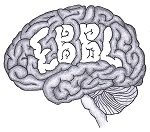Researchers have multiple theories of the underlying causes of obsessions and compulsions of obsessive-compulsive disorder. A quote by Robinson and Freeston (2014) sums it up the philosophical debate pretty well:
By a cognitive account, thoughts and thinking biases generate emotions (Lazarus, 1984), in which case difficulties identifying, expressing and tolerating emotional states will intensify the problem creating a ‘turbo-charger’ effect (Johnson-Laird, Mancini, & Gangemi, 2006). An alternative account suggests affect precedes cognition (Zajonc, 1984), and for OCD the extreme endpoint of this interpretation is that obsessional symptoms are a post-hoc account for the distressing internal experience, which is primary (Beech, 1971). (Robinson & Freeston, p. 269)
I believe it’s necessary for us to first just get a grasp on what the affective and cognitive differences are in OCD patients. This post will focus on affective symptoms of OCD, while the next post will focus on the cognitive impairments. I won’t be trying to argue which one brought about the other. I’ll only lay out the current research underlying both the chicken and the egg; you can theorize which came first.
Let’s talk Affect: Perspective taking and Disgust
One major affective symptom of OCD is an impairment of recognizing emotional facial expressions, and a lowered ability for perspective taking in general (Kang et al, 2012). A study by Daros, Zakzanis and Rector (2014) showed that patients with OCD were less accurate in recognizing facial expressions, more specifically negative emotions as a whole. They found that this deficit was largely due to a significant difference in recognizing disgust and anger (Daros, Zakzanis & Rector, 2014). They suggest that patients with OCD may misclassify emotional expressions, leading to this difference. A study by Whitton, Henry and Grisham (2014) discusses how OCD is characterized by heightened self-reported disgust, and found that this difference in disgust rating had no connection to any physiological response difference, indicating a strong mental connection to the idea of disgust instead of any physical experience of disgust.
Distress Tolerance and Reactivity
Another affective difference is distress tolerance and emotional reactivity. Greater obsession scores have been correlated to poorer emotional tolerance (Cougle et al, 2012). Findings by Cougle et al (2012) also suggest that heightened emotional reactivity may play a role in washing compulsions.
In the brain…
The brain functioning surrounding these affective differences can be seen in differences in striatal-amygdala and striatal-orbitofrontal functional connectivity (Jung et al, 2013). These areas are associated with affective and motivational states, and according to Jung et al (2013), these abnormalities may be the underpinnings of motivational and affective variations in OCD.
But are these affective characteristics specific to OCD?
It’s unclear how much of these differences are unique to OCD. A review by Robinson and Freeston (2014) looked at the following three constructs:
Alexithymia- difficulty with identifying and describing emotions
Anxiety sensitivity – aversion to the experience of anxiety due to belief that its symptoms have harmful consequences
Intolerance of internal experiences- distress tolerance and experiential avoidance
They found that all three are elevated in cases of OCD, but that there is no specificity for OCD over other anxiety disorders (Robinson & Freeston, 2014).
Self-report of disgust, however, was found to be higher in OCD than in other anxiety disorders, suggesting that a strong disgust idea is specific to OCD (Whitton, Henry, & Grisham, 2014). A study by Stern et al (2014) showed that a poorer understanding of emotions correlates with obsessive-compulsive symptoms, suggesting that overall inability to understand emotions could be specific to OCD as well.
That’s it for the Affect “Chicken”…
Stay tuned for the Cognition “Egg”!
Sources:
Cougle, J.R., Timpano, K.R., Sarawgi, S., Smith, C.M., & Fitch, K.E. (2012). A multi-modal investigation of the roles of distress tolerance and emotional reactivity in obsessive-compulsive symptoms. Anxiety, Stress, & Coping, 26(5), 478-492. doi: 10.1080/10615806.2012.697156
Daros, A.R., Zakzanis, K.K., & Rector, N.A. (2014). A quantitative analysis of facial emotion recognition in obsessive-compulsive disorder. Psychiatry Research 215, 514-521. doi: 10.1016/j.psychres.2013.11.029
Jung, W.H., Kang, D., Kim, E., Shin, K.S., Jang, J.H., & Kwon, J.S. (2013). Abnormal corticostriatal-limbic functional connectivity in obsessive-compulsive disorder during reward processing and resting-state. NeuroImage: Clinical, 3, 27-38. doi: 10.1016/j.nicl.2013.06.013
Kang, J.I., Namkoong, K., Yoo, S.W., Jhung, K., & Kim, S.J. (2012). Abnormalities of emotional awareness and perception in patients with obsessive-compulsive disorder. Journal of Affective Disorders, 141, 286-293. doi: 10.1016/j.jad.2012.04.001
Robinson, L.J. & Freeston, M.H. (2014). Emotion and internal experience in obsessive-compulsive disorder: reviewing the role of alexithymia, anxiety sensitivity and distress tolerance. Clinical Psychology Review, 34, 256-271. doi: 10.1016/j.cpr.2014.03.003
Stern, M.R., Nota, J.A., Heimberg, R.G., Holaway, R.M., & Coles, M.E. (2014). An initial examination of emotion regulation and obsessive compulsive symptoms. Journal of Obsessive-Compulsive and Related Disorders, 3, 109-114. doi: 10.1016/j.jocrd.2014.02.005
Whitton, A.E., Henry, J.D., & Grisham, J.R. (2014). Cognitive and psychophysiological correlates of disgust in obsessive-compulsive disorder. British Journal of Clinical Psychology, 1-18. doi: 10.1111/bjc.12058

